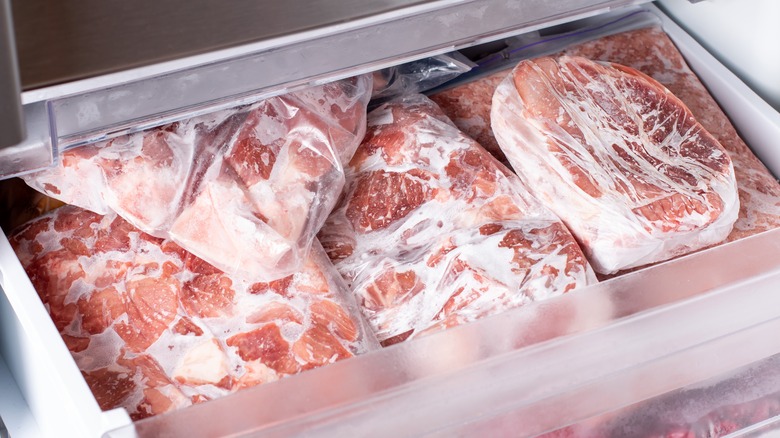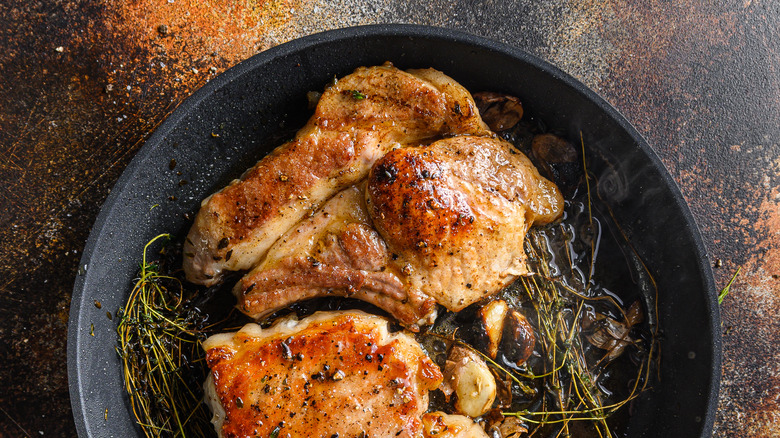Can Cooking Pork Straight From The Freezer Make You Sick?
We've all been there — you bought a hunk of meat and tucked it in the freezer to keep it fresh until the day comes for you to try that new recipe. You told yourself you would put it in the refrigerator the night before to thaw, only to realize with dinner mere hours away that your pork roast is still a frozen block in the back of the freezer.
Thawing meat takes a long time, and there are many common defrosting mistakes people make when trying to take a shortcut to perfectly thawed meat. The safest option is to thaw it overnight in the refrigerator, in a bowl or pan that can collect any condensation or leaking juices. Depending on the size of the meat, it could take between 10 and 24 hours to defrost in the fridge, or about 24 hours per 5 pounds for things like a whole turkey.
Many people prefer to defrost meat on the counter or in hot water, but these options are considered risky and should be avoided. Thawing in cold water can work, as long as the water is changed every thirty minutes, and the meat is kept in a leakproof package, but this will still take about 30-60 minutes per pound. But what if you really don't have extra time, and want to try to cook your pork directly from the freezer?
How to properly cook frozen pork
The good news is that pork can be cooked from frozen without making you sick or posing a health risk, as long as you're using the right methods. Pork can be cooked on the stovetop or grill, or in the oven, even if it is frozen. An air fryer or pressure cooker can also be used. You just need to make sure that the pork reaches a minimum internal temperature of 145 degrees Fahrenheit to ensure that it is fully cooked through.
Your meat should be cooked at a temperature of at least 325 or 350 degrees Fahrenheit, and will take between 1.5 times to 2 times as long to cook as thawed pork. So, if the recipe calls for 20 minutes in the oven, you should aim for between 30 and 40.
You cannot, however, cook frozen meat in a slow cooker. This is because it will run the risk of staying in the danger zone for meat, which the USDA considers to be between 40 and 140 degrees Fahrenheit. In other words, you want to keep your meat really cold or really hot if you're not planning on eating it immediately. Otherwise, you run the risk of exposing it to bacteria like E. coli or salmonella.

